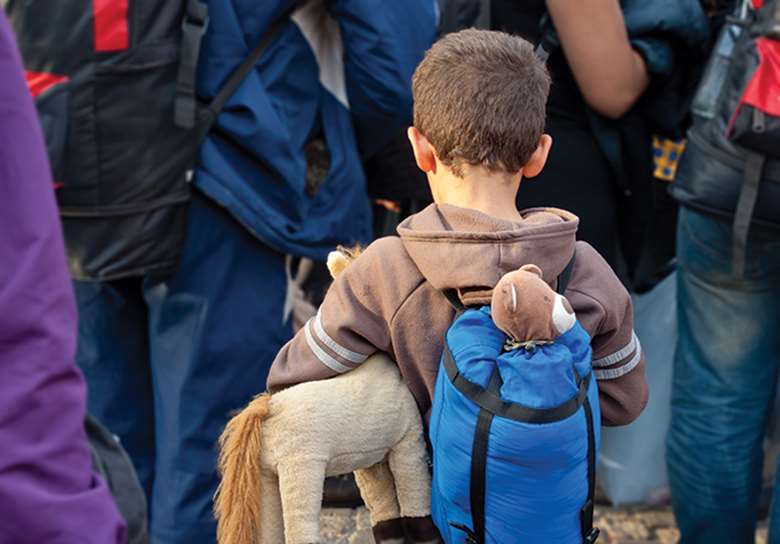Legal Update: Trafficking and safe passages
Frances Trevena
Tuesday, February 28, 2017
Frances Trevena, head of policy and programmes at Coram Children's Legal Centre, considers a report that highlights failings in the UK government's response to addressing child trafficking.

The latest report from the charity ECPAT has highlighted that the UK response to the trafficking of children has serious failings. The ReAct project took place in five European Union (EU) member states. It compared responses to child trafficking in the states, and the level of compliance in each member state to the EU directive on combating trafficking in human beings (2011/36/EU).
The report authors found that those who work with children, particularly lawyers, guardians and social workers, often miss key signs that a child may have been trafficked. As a result, children may still find themselves caught within a criminal process. Without adequate identification, children who have been trafficked for criminality remain at risk of prosecution and denied the support they are entitled to.
The Independent Anti-Slavery Commissioner highlighted at the beginning of 2017 that in the UK, the National Referral Mechanism remained a cumbersome process that was not fit for purpose. This was the finding of the review of the mechanism conducted in 2014. Since then, two regions in the UK have piloted an alternative model for identification, but this has not been rolled out nationally. In a letter to the minister for vulnerability, safeguarding and countering-extremism, the commissioner urged a broader focus on the National Referral Mechanism. In particular, he called for a mechanism that had the best interests of the child at its heart, and which placed a greater emphasis on the need for identification of trafficked children.
The ReACT report highlighted that identification by specialists, including lawyers and social workers, remains key to tackling human trafficking and particularly child trafficking. The research took place in 2016, and therefore took into account the increasing pressure of refugees and asylum seekers in Europe, and highlighted that there had been no real attempt to investigate human trafficking in the camp in Calais, or in other border camps. Where children are not correctly identified, this impacts on individual cases, and means that there is no concerted effort to disrupt trafficking routes.
Dublin and Dubs: what happens now for children in Europe?
On 8 February the minister for immigration Robert Goodwill informed the House of Commons that having transferred 350 children to the UK under the terms of the Dubs amendment, the government had decided to close the programme.
Does this mean that no more children will come to the UK from Europe?
No. Currently the government is still considering whether more children can be transferred from Italy or Greece. The total number of children who can be accommodated this financial year is capped at 350. This only refers to children who will need to be looked after by local authorities under the Children Act 1989.
What does the Dubs amendment require the government to do?
The Dubs amendment (section 67 of the Immigration Act 2016) requires the government to bring an unspecified number of children from Europe to the UK. The number must be agreed in consultation with local authorities. There is no upper or lower limit on the number of children that can come to the UK, and they are not required to have family members here in order to qualify. In December 2016, the government published eligibility criteria for children coming from the camps in Calais. As part of the criteria, children were required to have entered Europe before 20 March 2016, and to be in particular risk categories based on gender, age, risk of sexual exploitation, or nationality.
Will any children be able to come and join family members who are already in the UK?
The limit of 350 children does not include children who have family members or relatives in the UK and who can apply through the Dublin III regulation to join them. There is no cap on these numbers. However, some of the family relationships have broken down now that children are in the UK, and where children now need to be accommodated, then these count towards the 350 places for children.
Why are there still some children in France following the closure of the camp in Calais?
Some unaccompanied children from France were not eligible to be transferred under section 67 of the Immigration Act 2016 because they did not meet the criteria mentioned above, or because they were age assessed as being over 18. Other children were deemed not eligible for a transfer under Dublin III, because although they had family members in the UK, their relatives could not support them, or the family relationship was not sufficiently close.
What happens to these unaccompanied children now?
The government has now agreed to look again at a number of Calais cases.
What about the other unaccompanied children in Europe?
Research on migration demonstrates that a lack of safe routes for transfer puts people at risk of smuggling and trafficking. It has been reported that a number of children have now returned to Calais and are attempting to cross to the UK. This puts children and young people at risk of exploitation, and leaves them vulnerable to recruitment by people traffickers.
Download this Legal Update as a PDF
Legal Update is produced in association with experts at Coram Children's Legal Centre www.childrenslegalcentre.com
Sign up to the monthly childRIGHT bulletin from CYP Now and Coram Children's Legal Centre, for the latest news and information about children, young people and the law: www.cypnow.co.uk/email-bulletins




